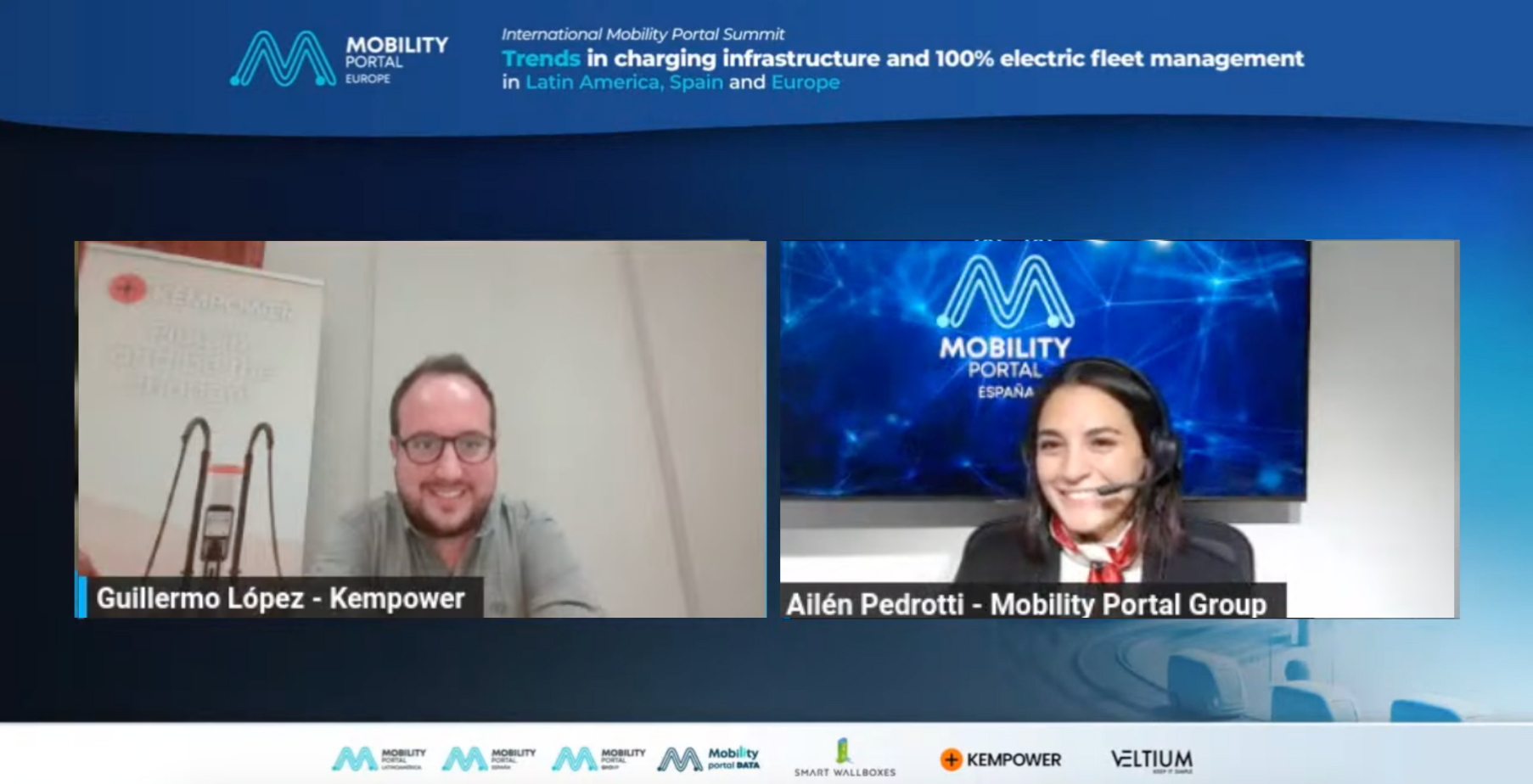“Spain has a significant amount of truck traffic, and the entire Mediterranean corridor must be electrified if we want to catch this train,” asserts Guillermo López Arias, Head of Sales at Kempower Iberia & LATAM.
Discussions surrounding the electrification of heavy transport have moved from words to actions, and how to implement this is now crucial.
Following his participation in the latest virtual summit of Mobility Portal España, Guillermo references all routes from Spain to Germany as key areas for the deployment of high-power charging points.
How can this be achieved?
The answer is simple: with MCS chargers, like those Kempower is presenting across Europe, including Spain.
At the SIL in Barcelona, a key fair for the logistics and transport sector, the company showcased the Megawatt Charging System.

This system integrates cutting-edge technology, offering a maximum power of 1.2 megawatt (MW) delivered through the Kempower Mega Satellite.
This innovation ensures optimal compatibility, providing a high-power MCS plug (megawatt charging plug).
What distinguishes it is its ability to incorporate both MCS and CCS2 outputs in the same system, maximising flexibility.
Moreover, its operation facilitates dynamic power management, efficiently distributing power among multiple outputs.
And now, the million-dollar question: Is there a market for the MCS?
“There is an increasing audience for this solution, and charging point operators are the ones making the most significant investments, though more as an investment,” confirms Guillermo López Arias.
But it is not that simple, various factors make the investment more complex and need to be considered.
First and foremost, the availability of the network.

Electric trucks will need to be recharged at service stations or new charging stations, whose location will primarily depend on already established traffic routes.
However, it must be carefully considered whether there is sufficient grid capacity to carry out the project.
Looking at the numbers, it is clear that each charging station will require 1,200 kilowatts, a power level achievable today.
This will increase to 3.75 megawatts when the MCS reaches its maximum power, equivalent to the consumption of an electric power substation.
“There will be many cases where we will not have sufficient grid availability, which is why betting on energy storage will be key to meeting the demand,” adds Guillermo.
Kempower and a direct letter to distributors
As the debate on the decarbonisation and electrification of heavy transport progresses, Kempower directly addresses energy distributors.
“Distributors in Spain are slowing down the deployment of charging points more than in other countries,” says López.
In terms of the national level, the long waiting times for project implementation by energy companies are the main factor slowing down the process.
Currently, the installation times for charging points for light electric vehicles range between six and 12 months, whereas for heavy vehicle charging, where power levels increase, this can take up to twice as long.
“Let’s not put obstacles in the way if we want to keep pace with the rest of Europe,” suggests Guillermo, who also highlights the lack of transparency in grid connection and the low stability for investors, which translates into the risk of investments fleeing to other countries.
Coexistence between segments, Kempower’s key to profitability
To maximise the profitability of these projects, Kempower believes it is essential to offer charging options for different types of electric vehicles and not limit themselves to a single segment.
For this reason, charging zones should be designed from a coexistence perspective between trucks and light vehicles.
A model to emulate? According to Guillermo López Arias, stations similar to petrol stations should be devised.
This will allow charging point operators to attract a broader range of customers and mitigate the space dilemma, a factor already being analysed at the European level.
In their studies on reducing emissions in the road transport sector, Équilibre des Énergies (EdEn), a transversal platform that brings together actors from the energy world, recognises that there is already limited space along roads for placing charging hubs.
A challenge that arises in the market alongside the obligation to comply with the Alternative Fuels Infrastructure Regulation (AFIR).
Here is the latest event from Mobility Portal Group in full:








